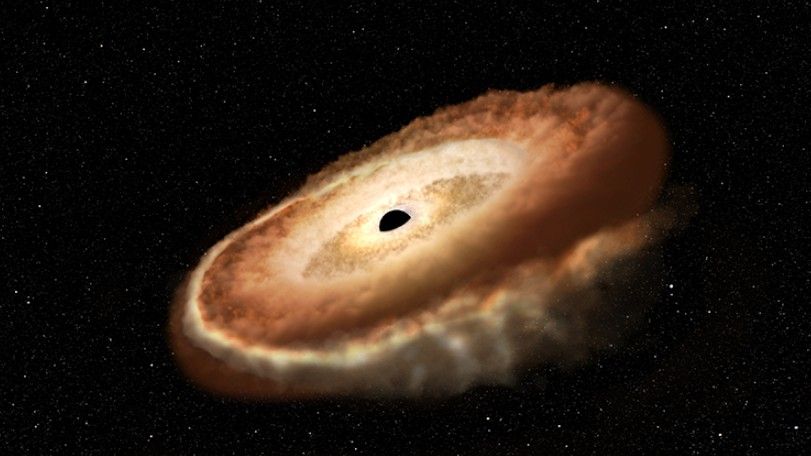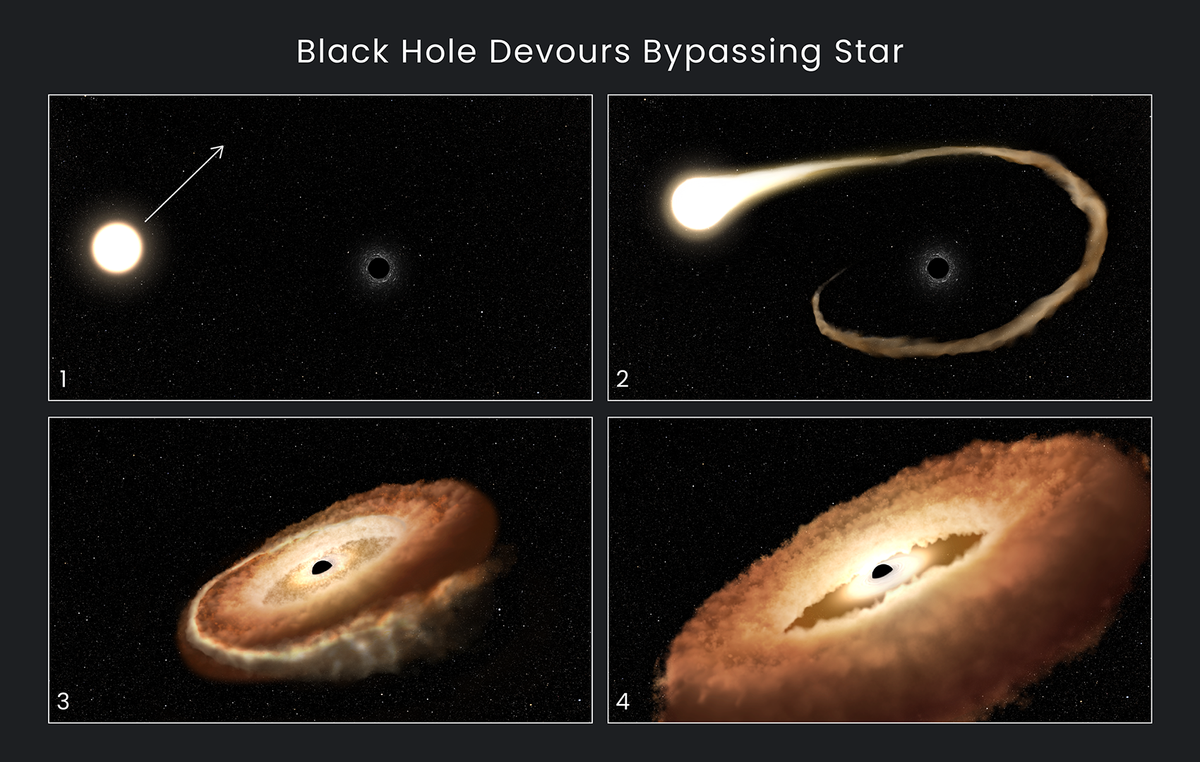Science
Related: About this forumBlack hole 'spaghettified' a star into a doughnut shape, and astronomers captured the gory encounter
By Ben Turner
published about 7 hours ago
The black hole wrapped the layers of the shredded star around itself to form the perfect doughnut of doom.

An illustration of a hapless star being 'spaghettified' by a monster black hole like the one Hubble just detected (Image credit: NASA, ESA, Leah Hustak (STScI))
The Hubble Space Telescope has spotted a star being stripped and stretched into a doughnut shape as a black hole devours it.
The supermassive black hole, located 300 million light-years from Earth at the core of the galaxy ESO 583-G004, snared and shredded the star after it wandered too close, sending out a powerful beam of ultraviolet light that astronomers used to locate the violent encounter.
When a black hole feeds, its immense gravity exerts powerful tidal forces on the unfortunate star. As the star is reeled ever closer to the black hole's maw, the gravity affecting the regions of the star closer to the black hole is far stronger than that acting on the star's farside. This disparity "spaghettifies" the star into a long, noodle-like string that gets tightly wound around the black hole layer by layer — like spaghetti around a fork.

This sequence of artist's illustrations shows how a black hole can devour a bypassing star. 1. A normal star passes near a supermassive black hole in the center of a galaxy. 2. The star's outer gasses are pulled into the black hole's gravitational field. 3. The star is shredded as tidal forces pull it apart. 4. The stellar remnants are pulled into a donut-shaped ring around the black hole, and will eventually fall into the black hole, unleashing a tremendous amount of light and high-energy radiation. (Image credit: NASA, ESA, Leah Hustak (STScI))
This doughnut of hot plasma quickly accelerates around the black hole and spins out into an enormous jet of energy and matter, which produces a distinctive bright flash that optical, X-ray and radio-wave telescopes can detect.
More:
https://www.livescience.com/black-hole-spaghettified-star-doughnut
Jim__
(14,456 posts)I believe this is about the same type of event:
GreenWave
(9,167 posts)Blue Owl
(54,734 posts)SCantiGOP
(14,238 posts)Amazing to think that black holes were defined and described (by Hawkins and others) before there was ever actual telescopic proof.